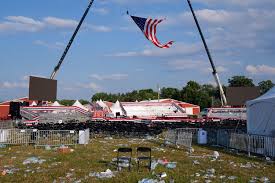Trump Under Shadow of Assassination Attempts

Trump’s 2024 election victory was decisive, clinching 312 electoral votes against Kamala Harris’s 226, flipping battlegrounds like Pennsylvania and Wisconsin. His campaign, however, was marred by violence. On July 13, 2024, in Butler, Pennsylvania, 20-year-old Thomas Matthew Crooks fired an AR-15 from a rooftop, grazing Trump’s ear and killing spectator Corey Comperatore. Secret Service agents killed Crooks, but a Senate report later exposed “catastrophic” security lapses, prompting Director Kimberly Cheatle’s resignation.
On September 15, 2024, a second attempt unfolded at Trump International Golf Club in West Palm Beach, Florida. Ryan Wesley Routh, 58, hid with a rifle for 12 hours, aiming at Trump before being spotted and fleeing. Captured and now on trial, Routh’s plot revealed ongoing Secret Service staffing shortages.
These incidents, part of a grim history where 40% of U.S. presidents faced assassination attempts, heightened security concerns. Trump, now protected by armored glass at events, faces a polarized nation and threats from Iran. Vice President JD Vance condemned political violence, urging unity.
Eight months into his term, Trump’s 202 executive orders target immigration and economic reform, with a 47% approval rating. As he navigates a Republican-led Congress and global tensions, the specter of violence looms large.
With two assassination attempts this past year there is an 80% chance that he will be assassinated before the midterm election according to AI predictions from 4 different models





















